Content
Reviews of columnar pear The decor is only positive. The tree begins to bear fruit early and, thanks to its miniature size, can be grown in small gardens. The variety is unpretentious, but requires care.
Description of the columnar pear variety Decor
The dwarf Decorah pear variety was developed relatively recently, but has already gained popularity among gardeners. The tree is compact, rarely grows up to 2 m. The branches are small, pressed to the trunk, growing straight upward. The foliage is good.
The columnar tree has good winter hardiness. With proper care, it can be grown in the Northern regions. Without additional shelter, the variety tolerates frosts down to -20°C.
Fruit characteristics
The description of the Decorah pear variety indicates that the fruits are large, which can be seen in the photo. The average weight reaches 200-250 g. The skin is evenly colored, without blush. The color of the pear is yellow-green. The pulp is juicy, sweet, grainy, aromatic.
The variety is classified as an autumn variety. Fruit ripening occurs at the end of August. The timing may vary in different regions.
When fresh, the crop is stored well, but for this you need to create all the conditions. The fruits are suitable for all types of processing. They are used to make compotes, jams or preserves. In addition, Decor pears are used for whole-fruit canning.
Pros and cons of the Decor variety
If we talk about the advantages of the variety, we can highlight:
- small tree size;
- precociousness;
- stable yield;
- self-fertility;
- good plant immunity;
- ease of cultivation;
- large fruit size;
- good preservation of the crop;
- high life expectancy of the tree;
- acceptable frost resistance.
The variety has practically no disadvantages. However, it is worth considering that ripe pears cannot be left on the branches for a long time. They fall off and spoil.
Optimal growing conditions
To reap a good harvest of Decor pears, the tree needs to create favorable conditions for fruiting. It is recommended to place seedlings in well-lit areas that are protected from cold winds.
Pear is unpretentious to soil, but grows well in fertile soil. Black soil, loam or sandy loam soil is suitable. The main condition is that groundwater should be low. The root system of the Decor pear does not tolerate damp areas, so drainage is necessary.
Planting and caring for Decora pear
Planting Decor pears can be done in spring and autumn. The timing depends on the climate zone and personal preferences.In regions with a harsh climate, it is better to plant seedlings in the spring so that they have time to take root well and easily survive the winter. The optimal time frame is March-April. In milder climates, autumn planting of pears is allowed, but the work must be completed before the first frost. There is no need to plant after October.
Landing rules
For planting, it is better to use annual Decorah pear seedlings. They take root well, which cannot be said about adult plants. The seedling needs to be chosen correctly:
- The root system is without damage or dry areas.
- The shoots are smooth, pressed to the trunk.
- Tree height up to 1 m.
If there are no one-year-old seedlings, then two-year-olds are quite suitable.
The pear is transported to the planting site so that the roots do not dry out. To do this, they are placed in a fabric bag and well moistened. Before planting, additionally soak the seedling in water for at least 8 hours.
The hole for planting the Decor pear is prepared in advance, about 14 days in advance. During this time, the soil will settle and absorb all the applied fertilizers. The pit size is about 80-90 cm deep and 60 cm wide. On light soils you can deepen up to 1 m. The bottom is well drained. Next, fill the hole with humus and other organic fertilizers. You can add mineral complexes by mixing them with soil.
Landing technique:
- Water the hole in advance so that the water is absorbed into the lower layers of soil.
- Form a mound of soil and lower the seedling.
- Spread the roots, raise the root collar level with the ground and fill the voids with fertile soil.
- Water the seedling generously.
The planting density cannot be reduced. The Decorah pear has an extensive root system.A distance of 1 to 2 m is maintained between seedlings. If there are a lot of trees, then row spacing is formed at 1.5 m.
Watering and fertilizing
Immediately after planting, the Decorah pear needs abundant watering. Until the seedling takes root, it is watered 3-4 times a week, after which the soil is well mulched to retain moisture.
For abundant fruiting, it is useful to feed the Decor pear. But an excess of fertilizers is harmful to the tree, as is their lack. In the 2nd year of cultivation, they begin to fertilize:
- In the spring, humus is added once, the procedure is combined with loosening the soil.
- Next, they switch to mineral complexes, which contain potassium and phosphorus.
- The main thing to do is to alternate organic matter with mineral fertilizers.
- Add humus no more than once every 2-3 years.
Trimming
Columnar trees need to be pruned correctly to ensure long-term fruiting and healthy seedlings. Decor pears begin to form in the 2nd year of cultivation. The central trunk is shortened by 15 cm in spring to stimulate the growth of side shoots. In autumn, the longest of them are cut back by a third.
Mature trees that have reached 7-8 years of age need to be rejuvenated. First, shoots located at an acute angle to the trunk are cut out, then those that are parallel.
Whitewash
In spring and autumn, the trunk and skeletal branches of the Decor pear need to be whitened to prevent the spread of pests and diseases. Lime is diluted according to the instructions, copper sulfate is added for disinfection.The composition is applied with a brush so that it fills all the cracks in the trunk well. The previously exfoliated bark is stripped back to healthy tissue.
Preparing for winter
If a tree is grown in the Northern regions, then it must be covered for the winter. Preparations begin at the end of summer, when the trunks are whitewashed. With the onset of stable frosts, when the temperature drops to -10°C, they begin to insulate the pear.
Instructions:
- Install a wooden frame around the tree and secure it with twine.
- Cover all free space with dry leaves or humus.
- The frame is additionally insulated with agrofibre or improvised material. Fix it well.
- After the snow falls, the tree is additionally covered.
- In the spring, the pear is gradually opened, without waiting for a thaw.
Pollination
The variety is self-fertile, but pollinators are needed for a stable large harvest. For this purpose, pears are planted on the site:
- Chizhovskaya;
- In memory of Yakovlev;
- Lada.
You can use other trees whose flowering patterns coincide with the Decorah variety.
Productivity
The characteristics of the variety indicate that the columnar Decorah pear begins to bear fruit in the 2-3rd year of cultivation. The harvest is produced every year, there is no cyclicity observed.
From 1 mature tree you can collect up to 20 kg of fruit, but for this you need to properly care for it. One year after planting, seedlings may bloom, but experienced gardeners do not recommend leaving inflorescences. They need to be removed. The next year, only 6 fruits are left, the rest are removed so as not to overload the young plant. Next, the number of ovaries is regulated, depending on the health of the pear.
Diseases and pests
The columnar Decorah pear has good immunity, but a weakened tree can get sick. The most common pests and diseases of the variety:
- fruit gall midge;
- aphid;
- white scab.
The fruit gall midge lays eggs inside the inflorescences, the larvae eat the ovary from the inside, and the pears fall off unripe. Up to 90% of the crop suffers from the pest. The fight against gall midges begins during the formation of buds. The tree is sprayed with Chlorophos and Metaphos.
Green aphids suck cell sap from young leaves and shoots, the plant slowly withers and dies. Pest control begins in early spring and continues throughout the season. The tree is sprayed with Karbofos. If there are few insects, then you can try folk remedies, for example, a solution of liquid soap.
Pears are often affected by a fungus called white scab. It appears as yellow spots on the leaves of the tree. Gradually, the disease spreads to the fruits, they become unfit for food. To prevent disease, Decorah pears are sprayed with 3% Bordeaux mixture in early spring and after harvest. If the disease occurs in the summer, then use a 1% solution so as not to burn the leaves.
Reviews about pear Decor
Conclusion
Reviews about the Decor columnar pear, apparently, only confirm the characteristics and description of the variety. The tree is really suitable for regions of risky farming and requires normal care and preventive treatments. Before planting a variety on the site, you need to familiarize yourself with all its pros and cons.
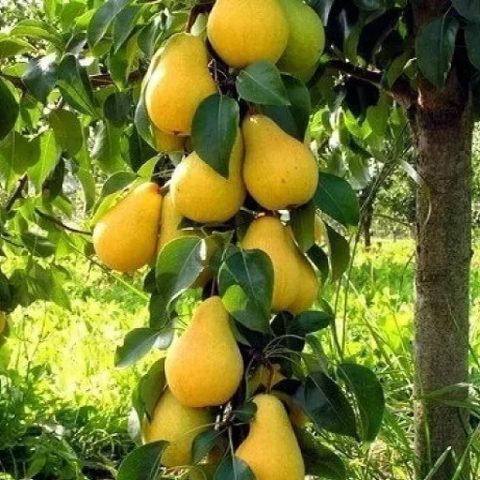
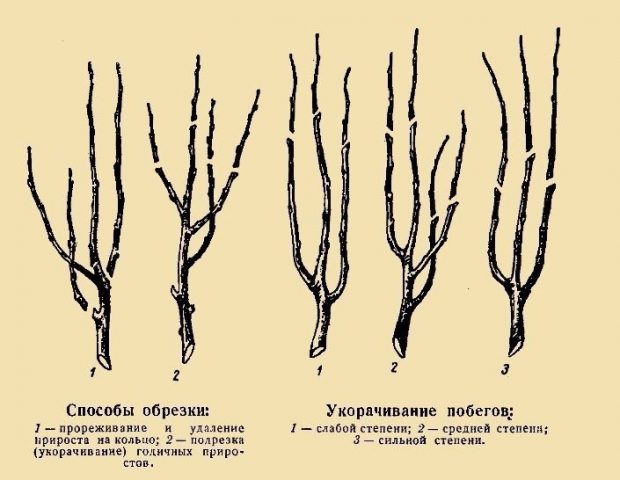
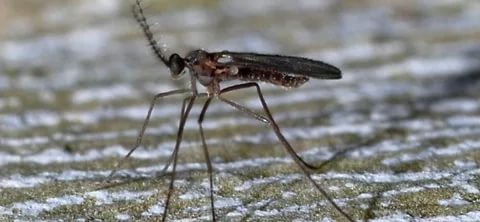
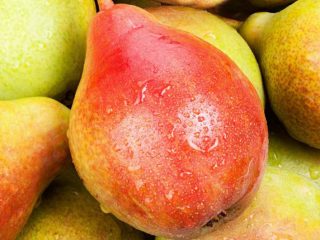
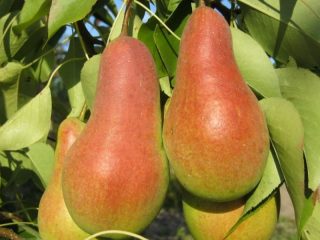
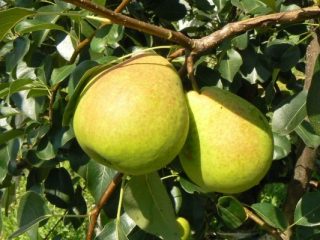
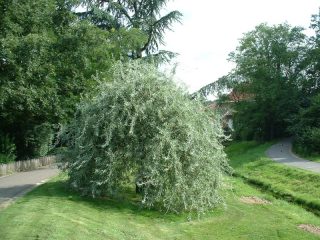
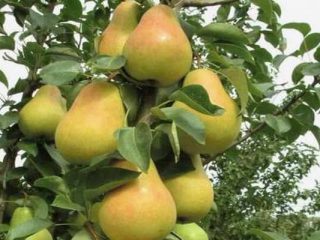
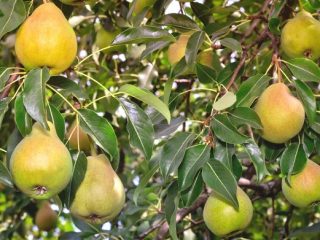
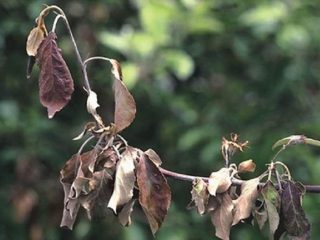

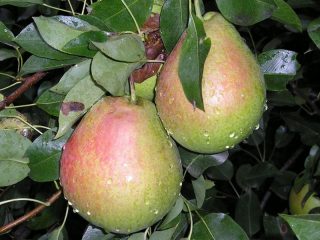
The decor has been on my plot for 3 years now, but it is not going to bear fruit, why??